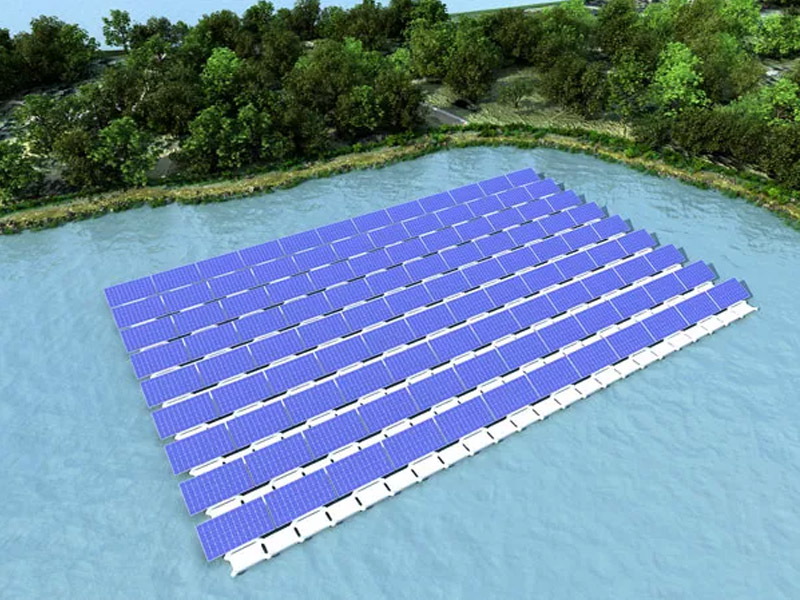In recent years, with the large increase of road photovoltaic power stations, there has been a serious shortage of land resources that can be used for installation and construction, which restricts the further development of such power stations. At the same time, another branch of photovoltaic technology – a floating power station has entered people’s field of vision.
Compared with traditional photovoltaic power plants, floating photovoltaics install photovoltaic power generation components on floating bodies on the water surface. In addition to not occupying land resources and being beneficial to people’s production and life, the cooling of photovoltaic components and cables by water bodies can also effectively improve power generation efficiency. . Floating photovoltaic power plants can also reduce water evaporation and inhibit the growth of algae, which are beneficial and harmless to aquaculture and daily fishing.
In 2017, the world’s first floating photovoltaic power station with a total area of 1,393 mu was built in Liulong Community, Tianji Township, Panji District, Huainan City, Anhui Province. As the world’s first floating photovoltaic, the biggest technical challenge it faces is one “movement” and one “wet”.
“Dynamic” refers to the simulation calculation of wind, wave, and current. Since the floating photovoltaic power generation modules are above the water surface, which is different from the constant static state of conventional photovoltaics, detailed wind, wave and current simulation calculations must be carried out for each standard power generation unit to provide a basis for the design of the anchoring system and floating body structure to ensure the floating structure. The safety of the array; among them, the floating square array self-adaptive water level anchoring system adopts ground anchor piles and sheathed steel ropes to connect with the edge reinforcements of the attached square array. To ensure uniform force, safety, and reliability, and to achieve the best coupling between “dynamic” and “static”.
“Wet” refers to the long-term reliability comparison of double-glass modules, N-type battery modules, and anti-PID conventional non-glass backplane modules in wet environments, as well as the verification of the impact on power generation, and the durability of floating body materials. To ensure the safety of the floating power station’s design life of 25 years, and provide reliable data support for subsequent projects.
Floating power stations can be built on a variety of water bodies, whether they are natural lakes, artificial reservoirs, coal mining subsidence areas, or sewage treatment plants, as long as there is a certain amount of water area, the equipment can be installed. When the floating power station encounters the latter, it can not only regenerate the “wastewater” into a new power station carrier, but also maximize the self-cleaning ability to float photovoltaics, reduce evaporation by covering the water surface, inhibit the growth of microorganisms in the water, and then Realize the purification of water quality. The floating photovoltaic power station can make full use of the water cooling effect to solve the cooling problem encountered by the road photovoltaic power station. At the same time, because the water is not blocked and the light is sufficient, the floating power station is expected to improve the power generation efficiency by about 5%.
After years of construction and development, the limited land resources and the impact of the surrounding environment have greatly restricted the layout of pavement photovoltaics. Even if it can be expanded to a certain extent by developing deserts and mountains, it is still a temporary solution. With the development of floating photovoltaic technology, this new type of power station does not need to scramble for valuable land with residents, but turns to a wider water space, complementing the advantages of the road surface and achieving a win-win situation.
Post time: Sep-30-2022

